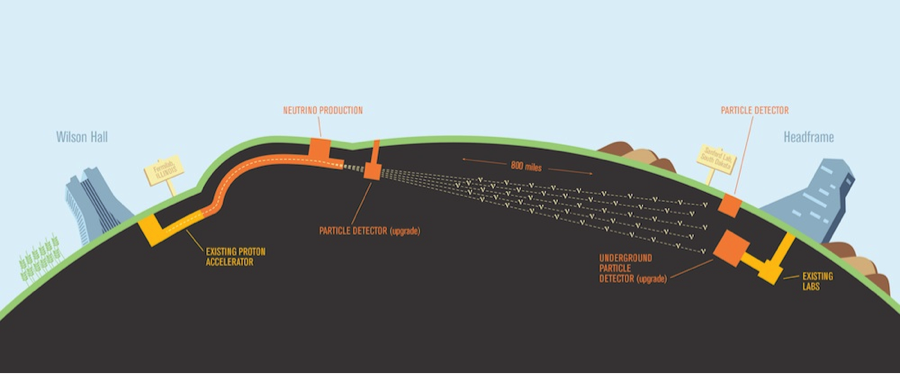DUNE (Deep Underground Neutrino Experiment) at the Long Baseline Neutrino Facility is a next generation neutrino experiment planning to build a very large scale 40 kt LAr detector to provide unprecedented sensitivity to the study neutrino. The very large detector will be located at the Stanford Underground Research Facility (SURF) at a baseline of 1300km from the Fermilab neutrino beam. DUNE proposes an immense scientific program and will answer many of the great questions of neutrino physics.

DUNE Physics
The main physics goals for DUNE will be to study long baseline neutrino oscillations. After measuring with precision the different oscillation parameters (θ13, θ23), DUNE will resolve the θ23 octant and will identify the neutrino mass hierarchy. The ultimate objective is to search for CP violation in the neutrino sector (and measure the CP-violation phase). Discovering CP violation in the neutrino sector could answer the long-lasting mystery of the unbalance in the Universe between matter and anti-matter.
In addition to the oscillation physics programme, DUNE will study atmospheric neutrinos, supernova bursts and nucleon decay.
Group Activities
The Oxford Group is heavily involved in the planning and preparation of DUNE. Giles Barr is leading the overall effort to design the DAQ system for the far detector and Alfons Weber is the UK project leader. He is also leading the design group specifying and planning the near detector, which will study the details of the neutrino beam and neutrino interactions. Xianguo Lu is involved in the data analysis with ProtoDUNE at CERN, the prototype detector of the DUNE liquid argon Far Detector, and the development of a high-pressure gaseous argon TPC for the DUNE Near Detector. Kirsty Duffy is involved in the DAQ design for the DUNE Near Detectors, as well as the development of DUNE's oscillation analyses and the high-pressure gaseous argon TPC for the DUNE Near Detector.
